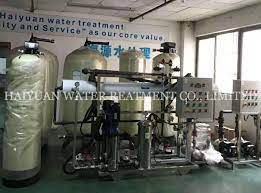Pesticide Metabolism in the Human Body
Risk assessment needs reliable scientific information and one source of information is the characterization of the metabolic fate and toxicokinetics of compounds. Toxicokinetics refers to the movement of a xenobiotic into, through, and out of the body and is divided into several processes including absorption, distribution, metabolism, and excretion, ADME.
Metabolism is one of the most important factors that can affect the overall toxic profile of a pesticide. During metabolism, the chemical is first biotransformed by phase I enzymes, usually by the cytochrome P450 (CYP) enzyme system, and then conjugated to a more soluble and excretable form by phase II conjugating enzyme systems.
In general, these enzymatic reactions are beneficial in that they help eliminate foreign compounds. Sometimes, however, these enzymes transform an otherwise harmless substance into a reactive form – a phenomenon known as metabolic activation.
Cytochrome P450 (CYPs) – the human xenobiotic-metabolizing enzymes
The P450 enzymes are hemoproteins with approximate molecular weights of 50,000 Da. These enzymes catalyze the monooxidation of a wide variety of CYP oxidation reactions involve a complex series of steps.

The initial step involves the binding of a substrate to oxidized CYP, followed by a one-electron reduction catalyzed by NADPH cytochrome P450 reductase to form a reduced cytochrome-substrate complex.
The next several steps involve interaction with molecular oxygen, the acceptance of the second electron from NADPHcytochrome P450 reductase, followed by subsequent release of water and the oxygenated product of the reaction.
Read ALso : Roles of Consumers in Waste Management
This reaction sequence results in the addition of one oxygen atom to the substrate, while the other atom is reduced to water (Parkinson 2001, Rose & Hodgson 2004). CYPs are found in high concentrations in the liver, but are present in a variety of other tissues, including lung, kidney, the gastrointestinal tract, nasal mucosa, skin and brain.
P450 enzymes are categorized into families and subfamilies by their sequence similarities. Humans have 18 families of cytochrome P450 genes and 44 subfamilies. The enzymes are thus identified by a number denoting the family, a letter denoting the subfamily and a number identifying the specific member of the subfamily.
In conclusion, public concern about the adverse environmental and human health impacts of pesticides led to strict regulations on their use in many countries. Nevertheless, many pesticides are still being used for agricultural and public health programmes.
Consequently, consumers are exposed to greater dietary levels of these pesticides. The available information regarding pesticide residues in meat, poultry and fish, milk and crop products in developing countries is very limited.
Therefore, the design and implementation of appropriate epidemiological studies and their integration with monitoring of samples from foods of plant and animal origins as well as environmental samples would be a major step in assessing the risk of pesticide residues in food items and controlling or eliminating them.
With the continued globalization of trade in plant and animal food products and the concomitant risk that the food contamination through point-source pollution may be widely distributed, identification of sources and their control should be matters of international concern, research and action.
The four routes by which a substance can enter the body are inhalation, skin (or eye) absorption, ingestion, and injection.
Pesticide residues have potentials to cause disorder in the human body system performance following chronic exposure to even low concentrations. Econoclimate is very important in management decisions involving use and non-use of atmospheric resources;
The magnitude of the harm they cause also cut across all areas of human health.iv.applicability of econoclimatic model is not restricted to agricultural planning.
Toxicokinetics refers to the movement of a xenobiotic into, through, and out of the body and is divided into several processes including absorption, distribution, metabolism, and excretion, ADME.



